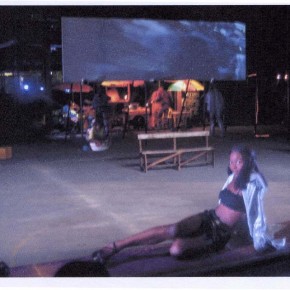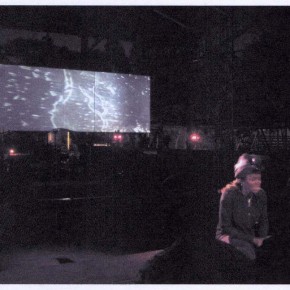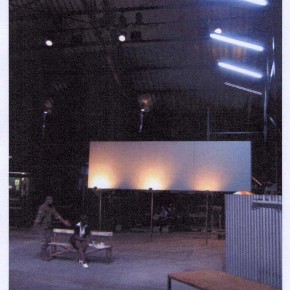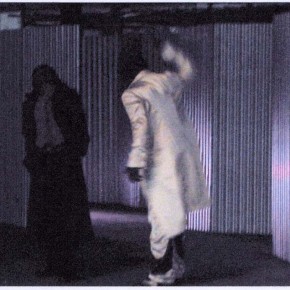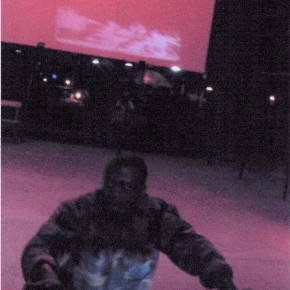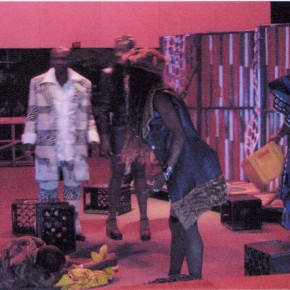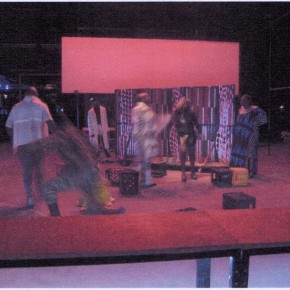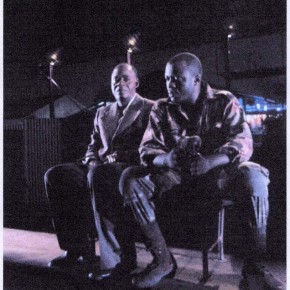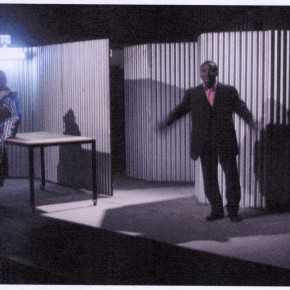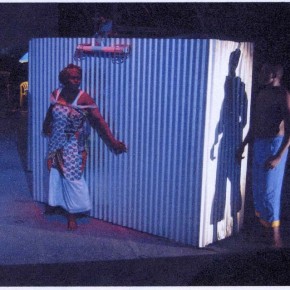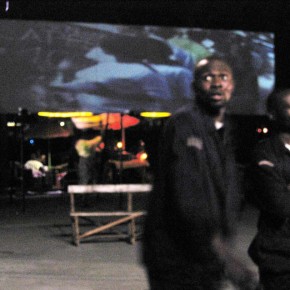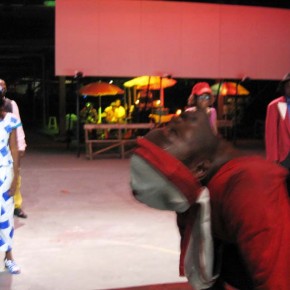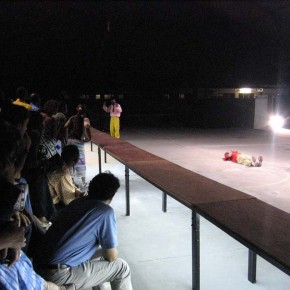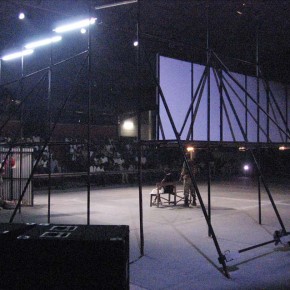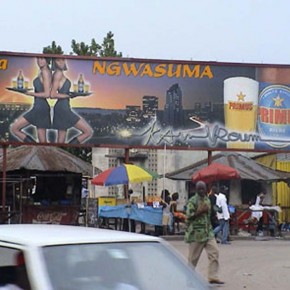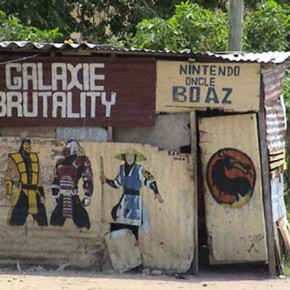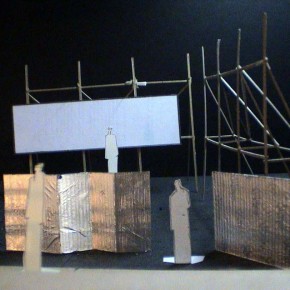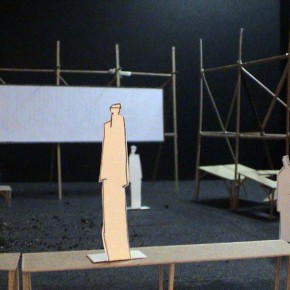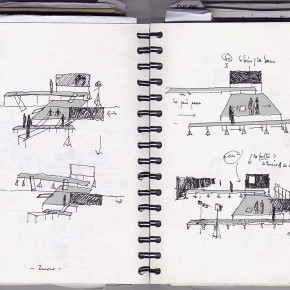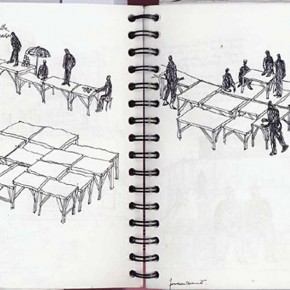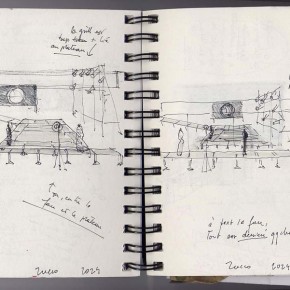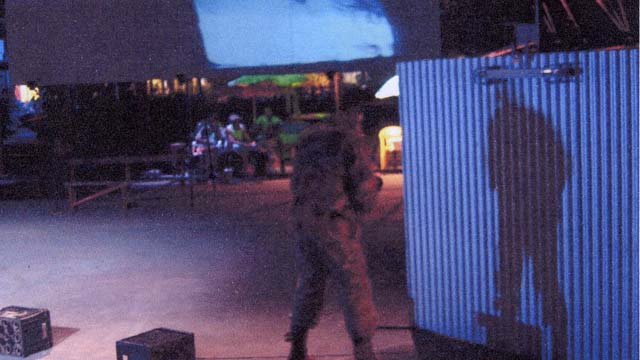
Roberto Zucco // Koltès – Philip Boulay // 2004-2006
Mise en scène Philip Boulay // Assistante Astrid Mamina // Scenographie et videos Jean Christophe Lanquetin // Assistants Freddy Mutombo Ken’s Mukendi Christian Tundula and (in France) Geraldine Trubert & Mélinée Faubert Chabert, (in Burkina Faso) Eulalie Bordes // Lumières et technique Marc Boussac // Assistant Emmanuel Mafuta, Henri Kisasa // Costumes Gaby Amundala, J-Christophe Lanquetin, Betty Mawete, Vitshois Mwilambwe, Olivier Toloko // Choreographie Fabrice Bwabulamutina // Peintures Vitshois Mwilambwe // Accessoires Mega Mingiedi // Poster & Typographies Christian Tundula Avec Nana boboto, Fabrice Bwabulamutima, Bavon Diana, Joujou Dipesa, Miphy Gialo, Moïse Ilunga, Gisele Kayembe, Toto Kisaku, Noel Kitenge, Anni Lukayisu, Ornella Mamba, Tshipamba Mouckounay, Ados Ndombasi, Blaise Nzokweno // Musiciens Bebson de la Rue, Pytshens Kambilo, Dicoco Bokhetsu, Djanga Weni // Construction de la Scenographie Realtech // Fabrication costumes Top Model Agency & Olivier Toloko // Production Jean Christophe Boissonnade // Coproduction Cie du Tournesol & Halle de la Gombé Kinshasa. Création à Kinshasa aout 2004, tournée à Ouagadougou, Niamey – 2005, et Paris, Forum Culturel du Blanc Mesnil – 2006.
La recherche ici est celle d’une prise spatiale et esthétique sur la ville de Kinshasa. Comment traduire sur un plateau l’environnement dont on se nourrit, via l’espace, et via l’équipe d’artistes qu’on associe au projet. La première version, à la Halle de la Gombé [à l’invitation de Jean Michel Champault], captait quelque chose de cette énergie, ne serait-ce que parce-qu’elle était partout, sur scène et dans le public. Par la suite, cet enjeu s’est dilué, et s’est mué, en France, en un face à face entre des artistes congolais sur scène, et un public européen dans la salle. Quelque chose du contexte à nouveau s’immiscait dans le projet : un autre récit, plus difficile car renvoyant au passé colonial via la position des regards, se superposait au projet originel.
– – – – – – – – – – – – – – – – – – – – – – – – – – – – – –
The research here is that of a spatial and aesthetic take on the city of Kinshasa. How to translate the environment on which we nourish ourselves on a stage, via space, and via the team of artists we associate with the project. The first version, at La Halle de la Gombé [an invitation by Jean Michel Champault], captured something of this energy, if only because it was everywhere, on stage and in the audience. Subsequently, this issue was diluted, and evolved, in France, into a face to face meeting between Congolese artists on stage, and a European audience in the room. Something of the context again interfered in the project: another narrative, more difficult because referring to the colonial past via the position of gazes, was superimposed on the original project.
Le spectacle à Kinshasa
Documents
